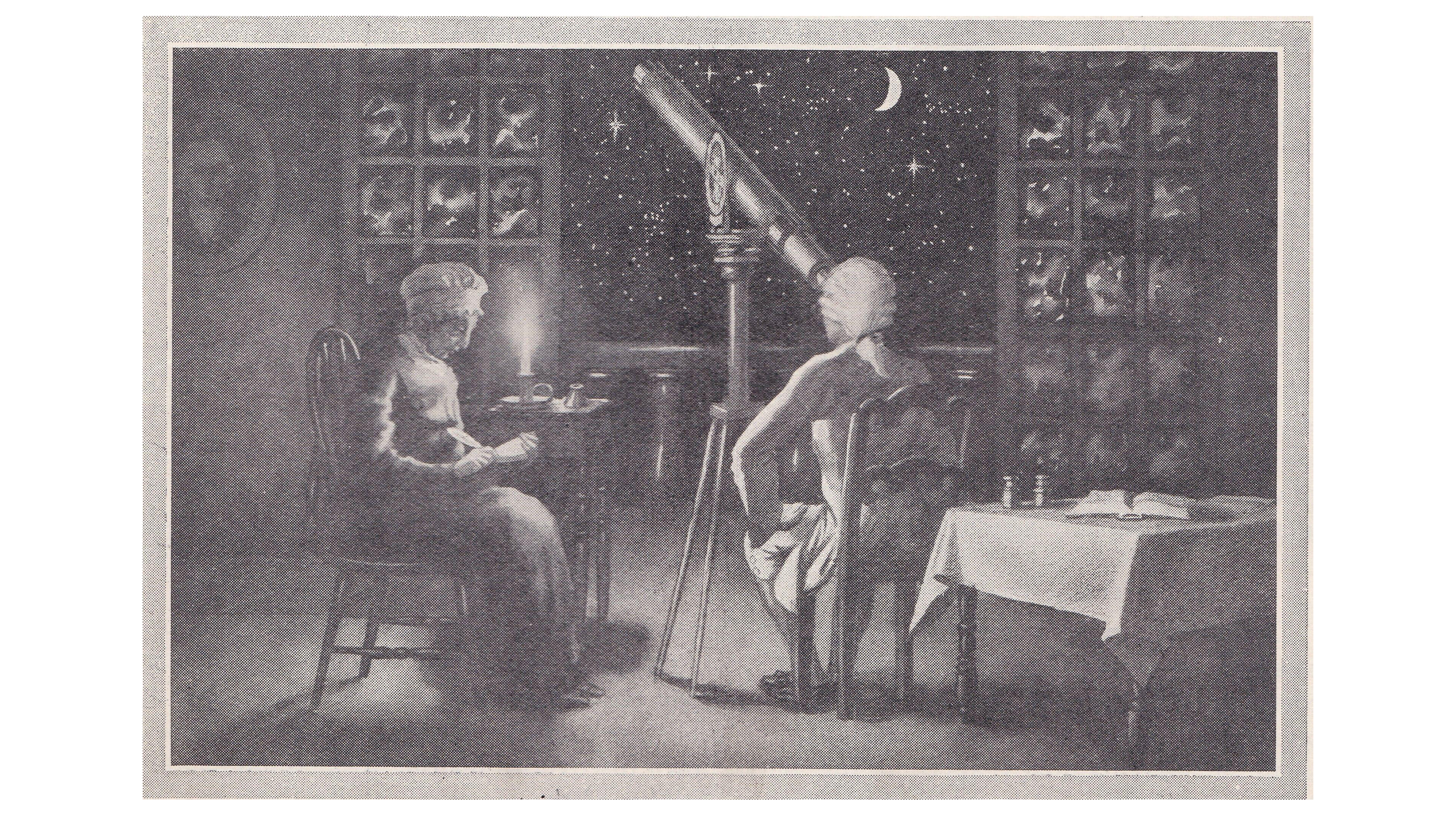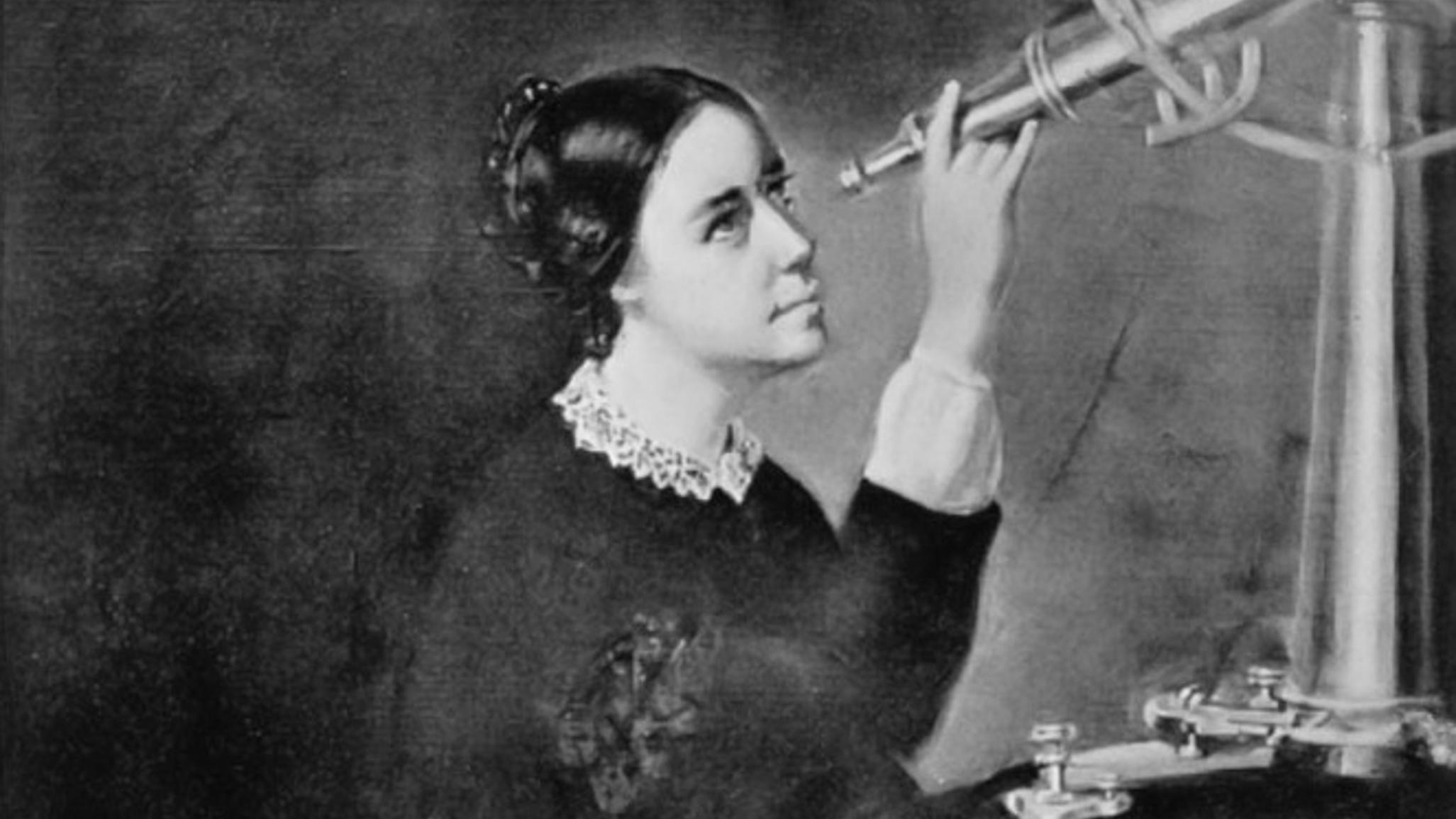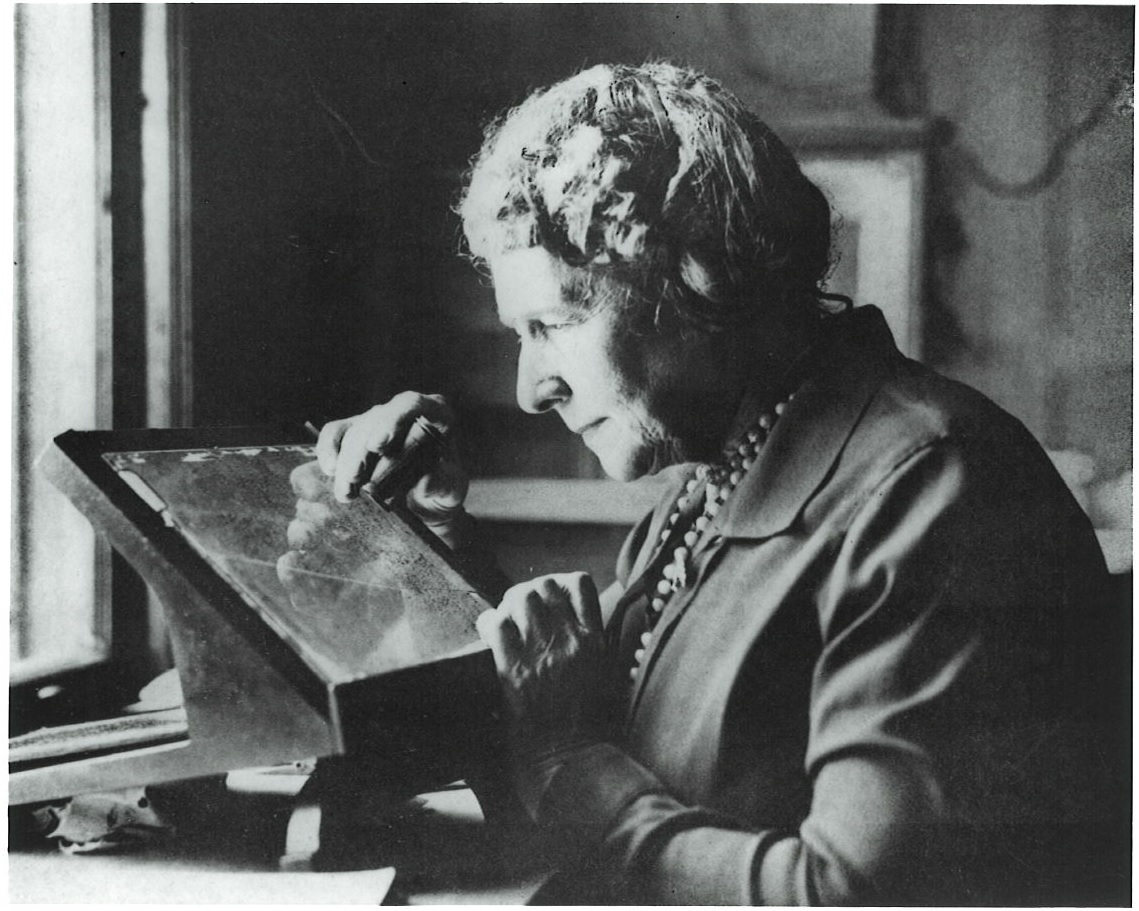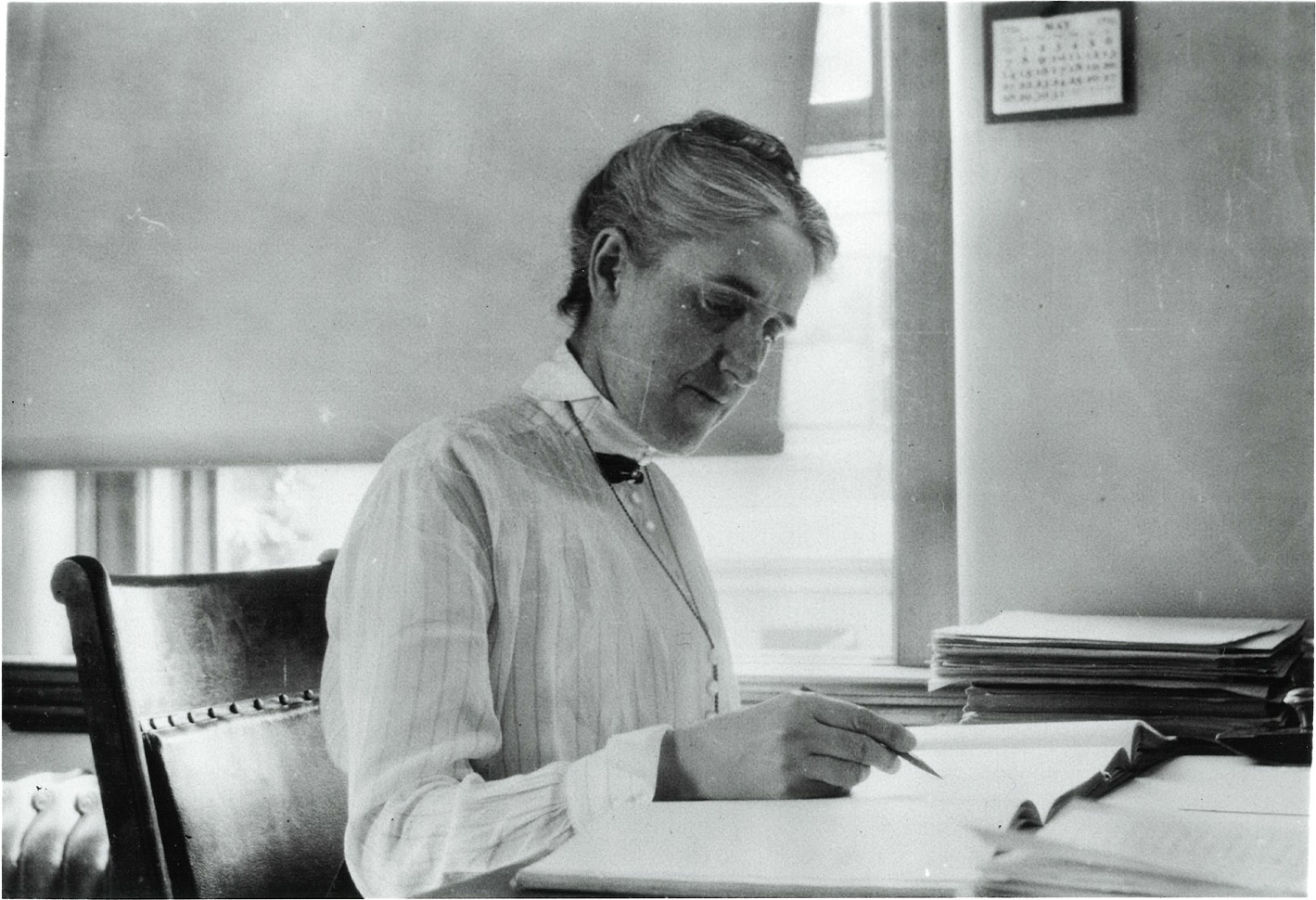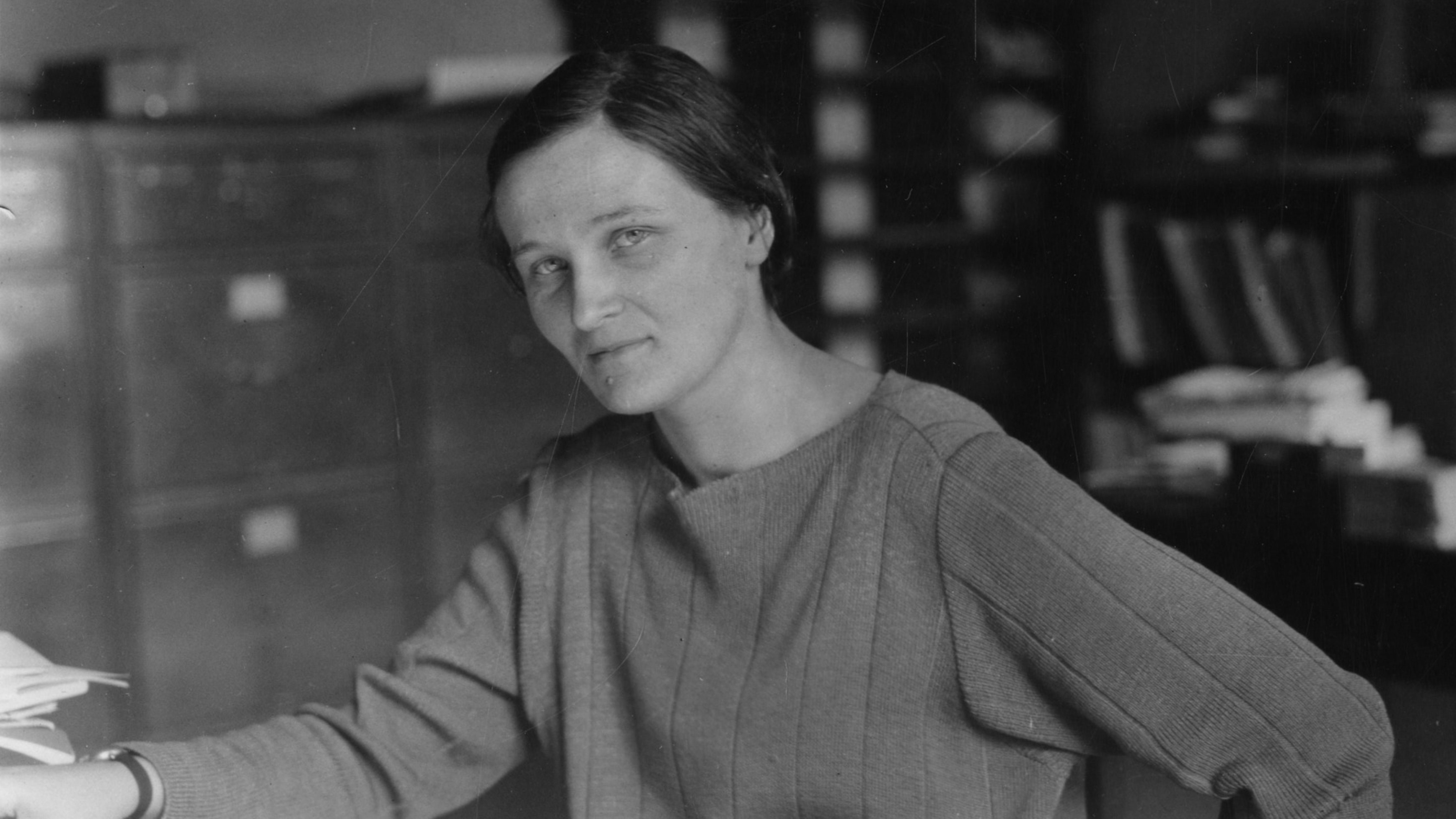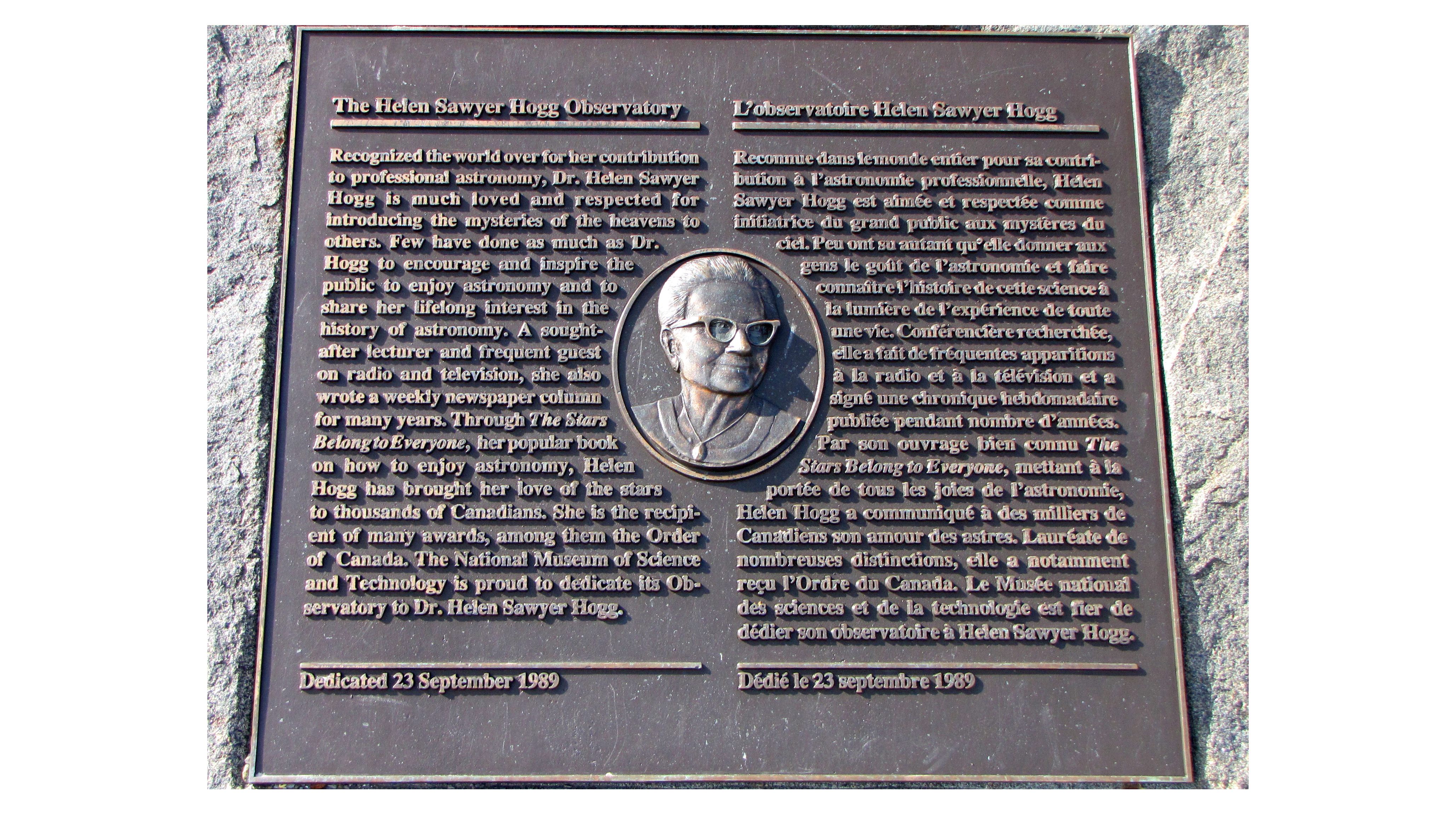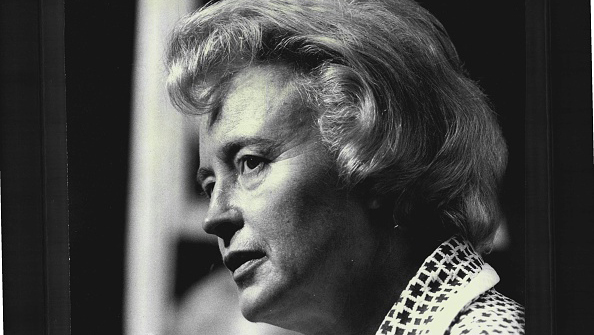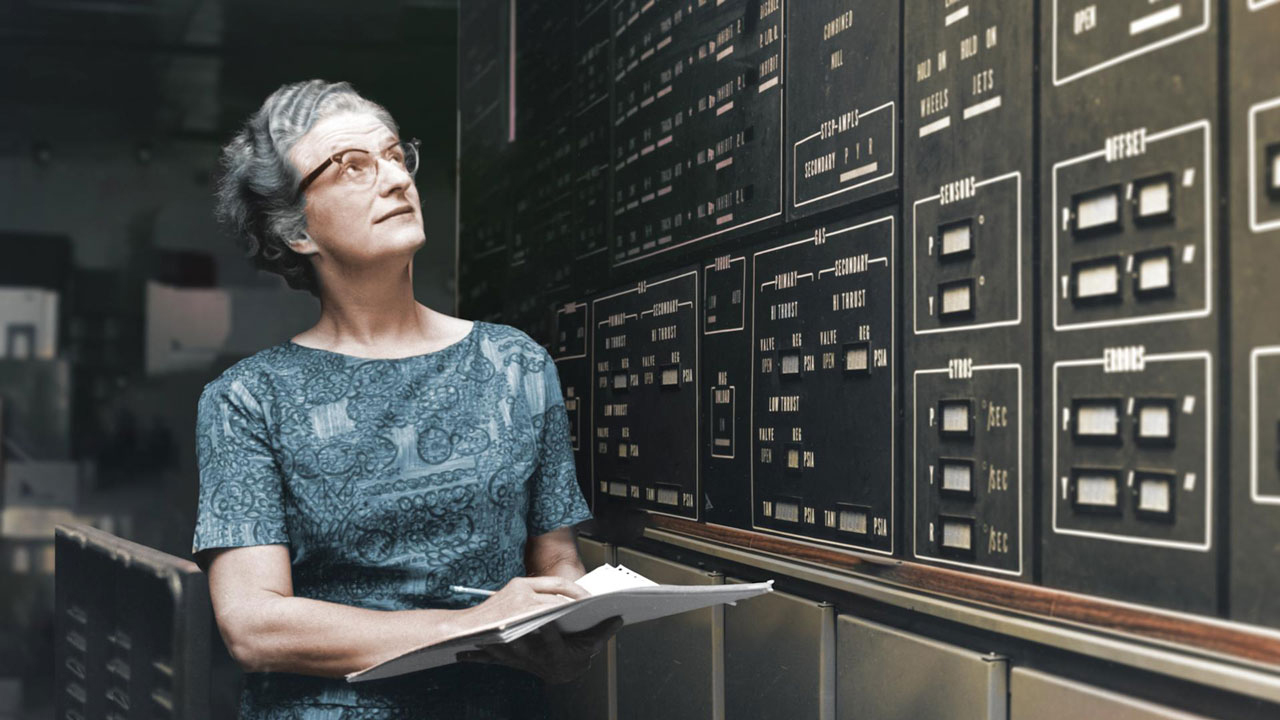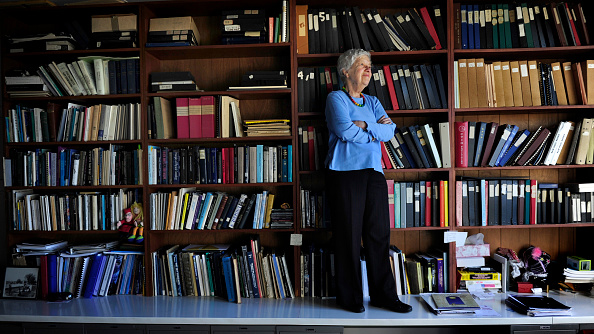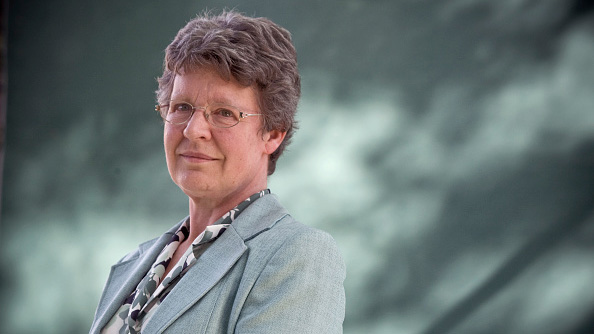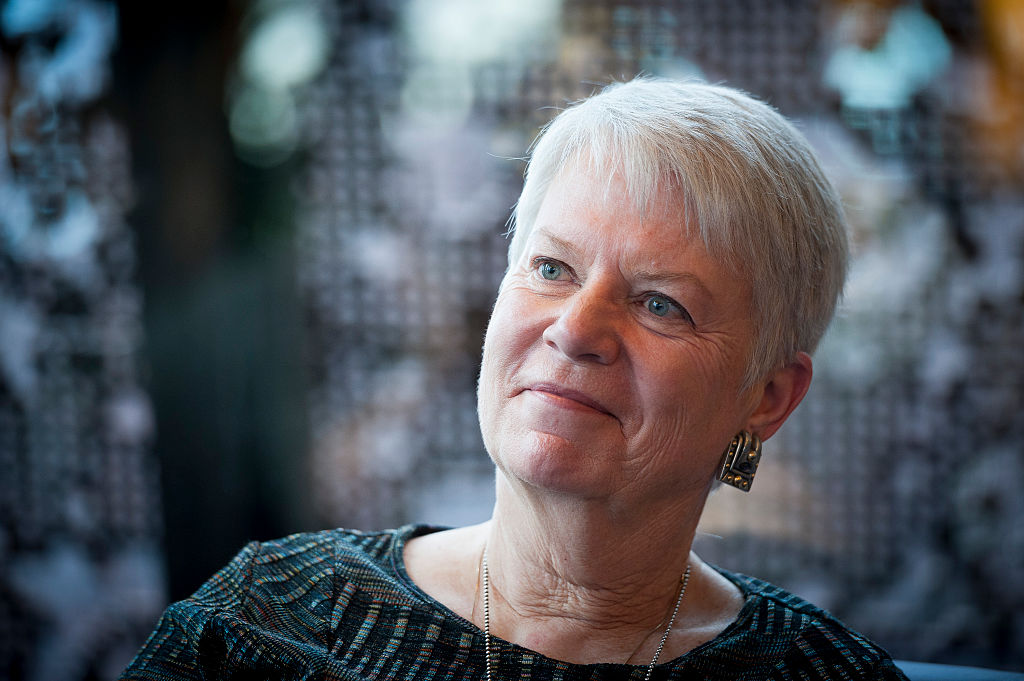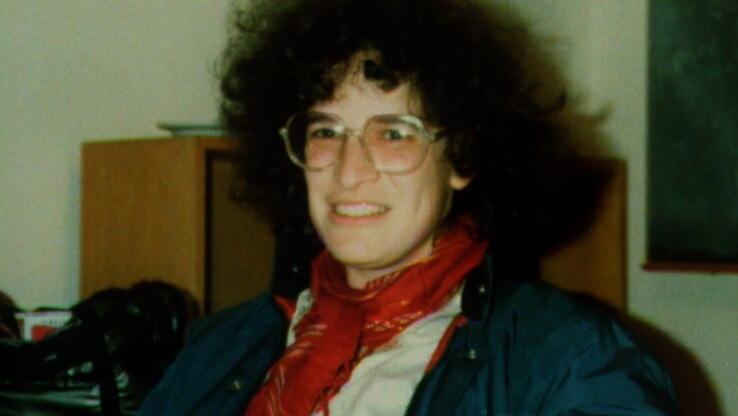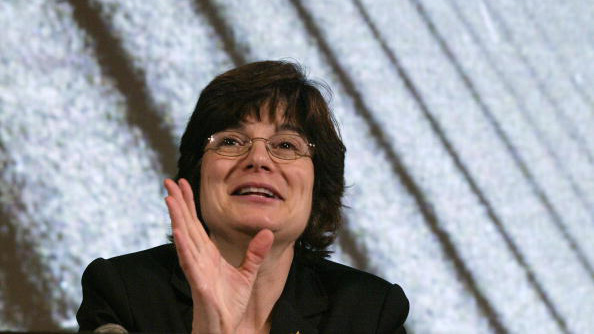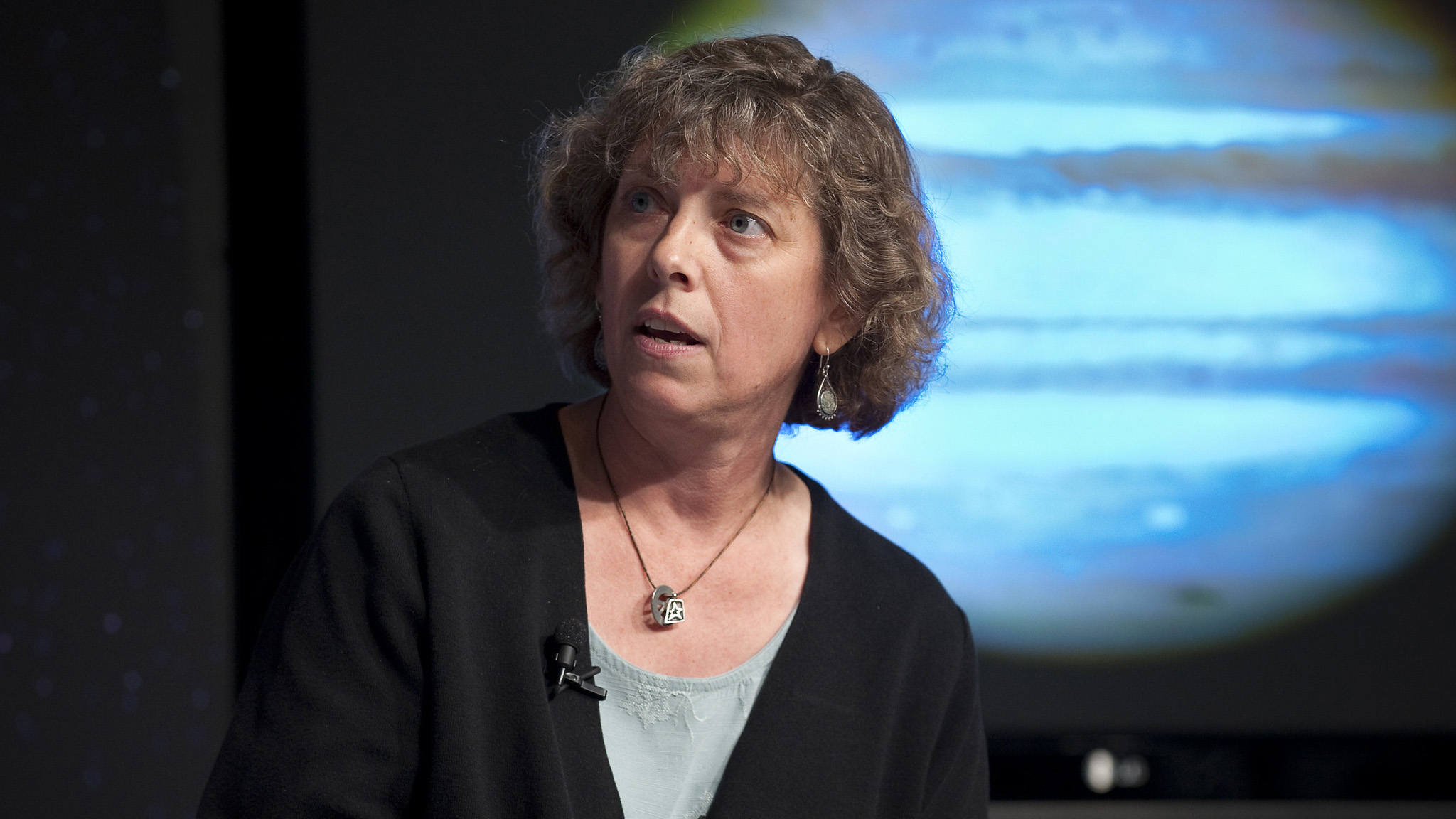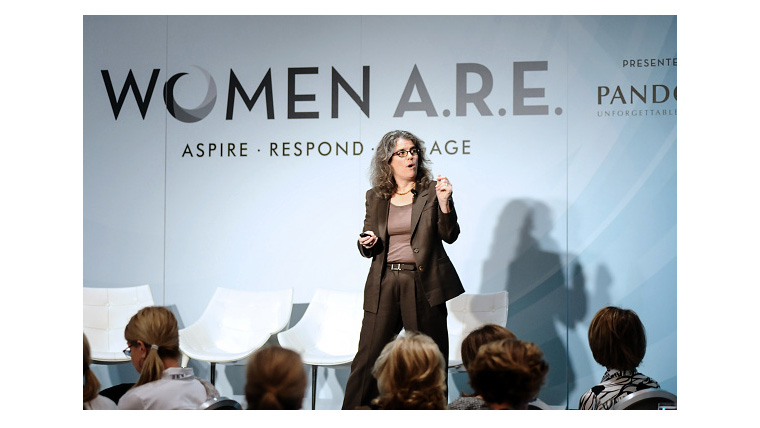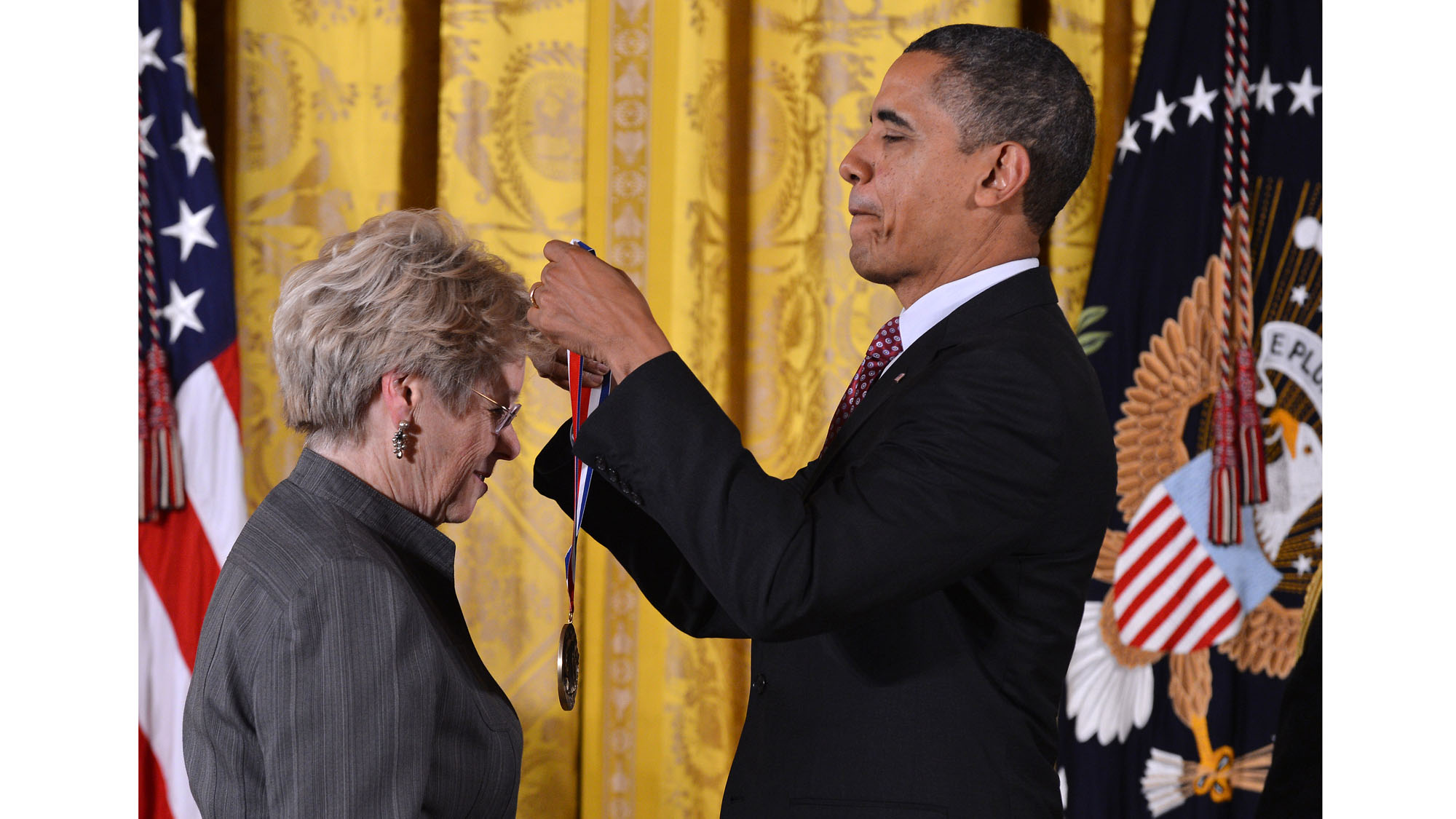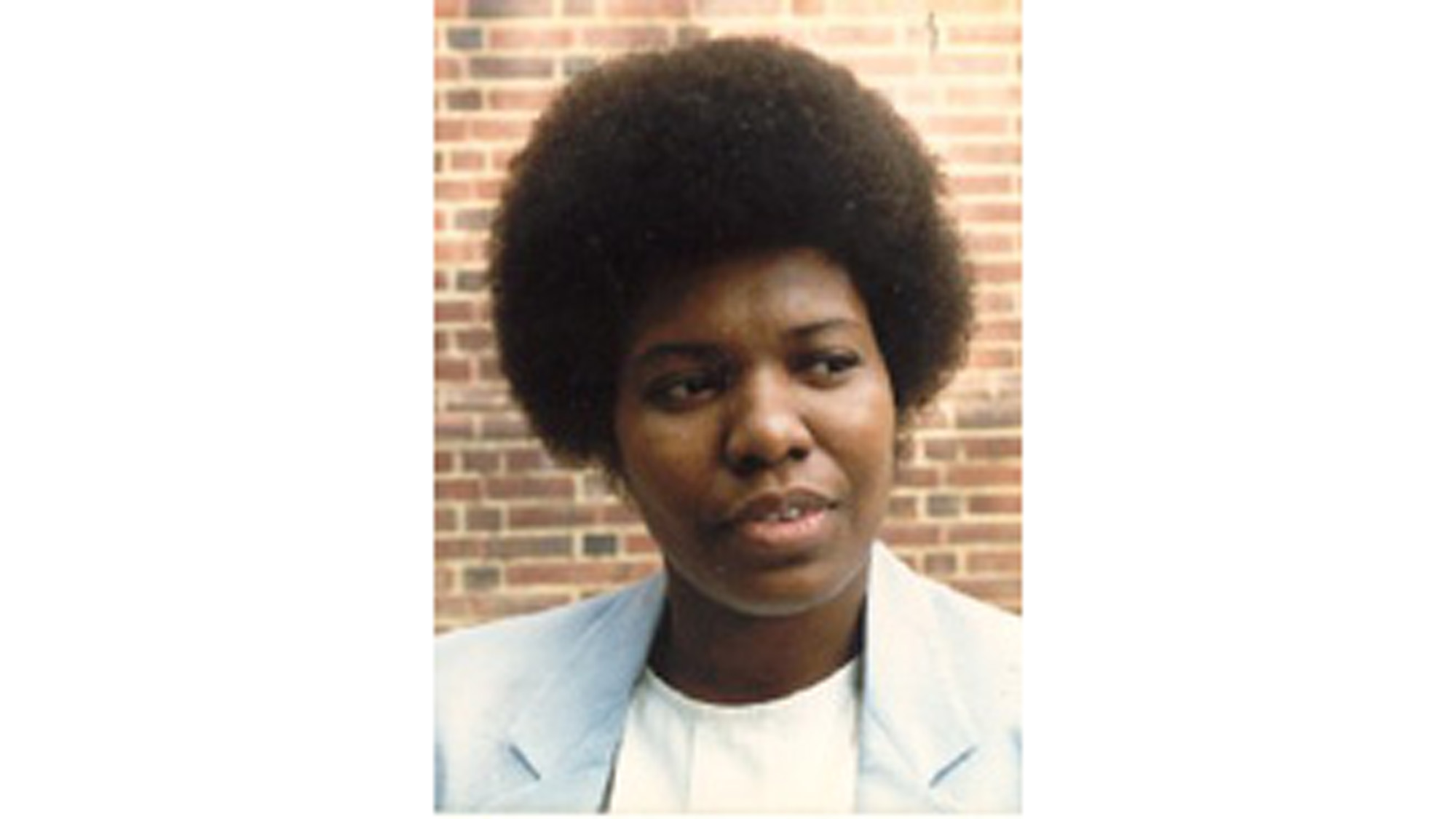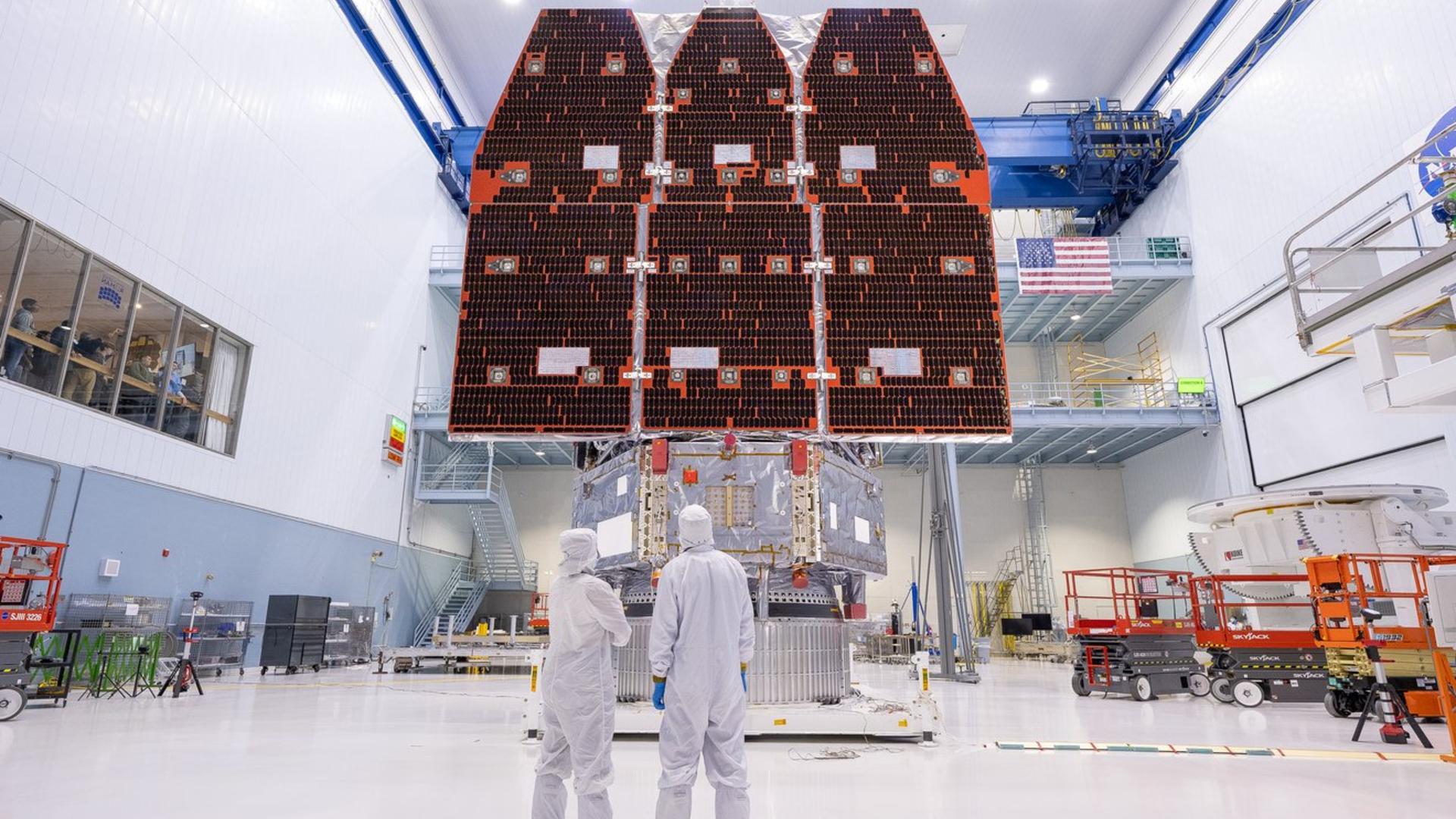20 trailblazing women in astronomy and astrophysics
- Caroline Herschel (1750-1848)
- Maria Mitchell (1818-1889)
- Annie Jump Cannon (1863-1941)
- Henrietta Swan Leavitt (1868-1921)
- Cecilia Payne Gaposchkin (1900-1979)
- Helen Sawyer Hogg (1905-1993)
- Margaret Burbidge (1919-2020)
- Nancy Grace Roman (1925-2018)
- Vera Cooper Rubin (1928-2016)
- Carolyn Shoemaker (1929-2021)
- Jocelyn Bell Burnell (1943-present)
- Jill Tarter (1944-present)
- Margaret Joan Geller (1947-present)
- Carolyn Porco (1953 to present)
- Heidi B. Hammel (1960 to present)
- Andrea M. Ghez (1965 to present)
- Beth A. Brown (1969 to 2008)
- Sandra Faber (1944 to present)
- Barbara A. Williams (current-day astronomer)
From discovering planets to following comets, women all over the world play a crucial role in astronomy.
While it's hard to pick the definitive list of women who have contributed to our understanding of the cosmos, these 20 women (mostly from modern times) will give you a sense of some of the scientific knowledge they contribute.
Related: Pioneering women in space – a gallery of astronaut firsts
Caroline Herschel (1750-1848)
Caroline Herschel is the first woman credited with discovering a comet and is also the first to receive honorary membership with Britain's prestigious Royal Society. Herschel's childhood passions included music, and she sang as a soprano in several performances in her early 20s.
But with her older brother, William, it was Herschel's enthusiasm in astronomy that she is best remembered for. Herschel at first polished mirrors and did other assistant tasks for her brother. She helped her brother with compiling a 20-year survey of the night sky, including 2,500 new nebulae and star clusters that were eventually compiled into the "New General Catalogue."
Herschel also observed the sky on her own, using a small Newtonian telescope. Among her discoveries were the open cluster NGC 2360, Andromeda Galaxy's companion nebula NGC 205 and a comet. In 1787, King George III gave her official employment as William's assistant, granting her a modest salary. Among her later career achievements was cross-indexing an existing star catalog compiled by John Flamsteed, including contributing 550 stars not included by Flamsteed.
Maria Mitchell (1818-1889)
Maria Mitchell is best remembered for discovering a comet using a telescope in 1847, an achievement that garnered her a gold medal from the King of Denmark. Mitchell is usually cited as the first professional female astronomer in the United States.
Breaking space news, the latest updates on rocket launches, skywatching events and more!
Mitchell's work in astronomy began in her childhood. By age 12, she had helped her father calculate the exact position of their house by using a solar eclipse. Only two years later, she rated ship chronometers for professionals; chronometers were instruments that measured time in challenging conditions involving motion or local weather variations.
Mitchell's 1847 discovery of a comet came on the roof of the bank where her family lived, and where her father was the head cashier. She worked at the Nantucket Atheneum as a librarian between 1836 and 1856, resigning from that post to focus on travel and astronomy studies. By 1865, she was an astronomy professor at Vassar College.
Other notable career achievements include working for the U.S. federal government on an ephemeris of Venus, founding the Association for the Advancement of Women, and becoming the first woman member of the American Academy of Arts and Sciences, among others.
Annie Jump Cannon (1863-1941)
Annie Jump Cannon is renowned for her approach to classifying and examining stars, including the famous O, B, A, F, G, K or M classification for stellar objects.
She began her career as one of a few dozen female "computers" (mathematicians) hired by Edward Charles Pickering, director of the Harvard College Observatory. Cannon and her colleagues spent their time examining photographic plates of stars, giving them specialized knowledge of the sky considered too tedious for men of the day.
Cannon studied physics and astronomy at Wellesley College, as well as advanced studies in astronomy at Wellesley and Radcliffe College (affiliated with Harvard). Her work with the Pickering computer group included classifying stars with her women colleagues; Cannon alone classified more than 350,000 stars in her career and supplemented other women's work in our understanding of stellar spectra.
Other career contributions by Cannon included publishing nine volumes of the Henry Draper Catalog between 1918 and 1924, creating the Harvard Catalogue of Variable Stars, and receiving numerous awards. She finally received staff status at Harvard in 1938.
Henrietta Swan Leavitt (1868-1921)
Henrietta Swan Leavitt is best remembered for discovering the relationship between period and luminosity in Cepheid variables, which are stars that fluctuate predictably in luminosity (inherent brightness). Cepheids are used as standard distance markers in astronomy, allowing scientists to estimate distances to galaxies and other faraway objects.
Leavitt was educated at both Oberlin College and the Harvard-affiliated Radcliffe College. She started her astronomy career at the Harvard College Observatory under Edward Charles Pickering, the same employer of Annie Jump Cannon. Like Cannon, Leavitt's job was to analyze photographic plates; by examining thousands of these images, she found that some stars have a consistent luminosity during fluctuations.
Leavitt, unfortunately, received little credit for her work during her lifetime, with most of the glory going to director Harlow Shapley (who used Leavitt's work to chart distances in the Milky Way). After her death, however, other astronomers came to recognize her work. For example, the American astronomer Edwin Hubble used Leavitt's information to help him compute the distance to the Andromeda Galaxy, which is the closest large galaxy to the Milky Way.
Cecilia Payne Gaposchkin (1900-1979)
While not well recognized in her lifetime, Cecilia Payne-Gaposchkin made numerous contributions to astronomy. She was the first woman to be awarded a PhD in astronomy at the Harvard-affiliated Radcliffe College. Her thesis focused on how the line patterns she saw in the spectra of stars could be related to physical conditions on those stars, which is fundamental work still underlying much of our understanding of stars today.
Harvard's Harlow Shapley and Princeton University's Henry Norris Russell both acknowledged her thesis as groundbreaking but disagreed with Payne-Gaposchkin's (correct) hypothesis that hydrogen is the main component of most stars. Working against the scientific consensus of the day, Payne-Gaposchkin downplayed the discovery to get her work published. Her hydrogen discovery was eventually validated, however, along with her later insight that helium is also a principal component of star formation.
Payne-Gaposchkin elected to remain at Harvard after completing her doctorate but was unable at first to get a professorship due to being a woman. Instead, she continued at less recognized positions while publishing numerous books about stars, variable stars and galactic structure. She finally was awarded the first woman professorship at Harvard in 1956, even attaining department chair (another first for a woman).
Helen Sawyer Hogg (1905-1993)
Helen Sawyer Hogg comfortably straddled the world of science and the challenge of popularizing science. The Canadian astronomer is best remembered for researching variable stars in globular clusters (clusters of older stars), but many Canadians remember her for a long-standing astronomy column she had in the Toronto Star between 1951 and 1981.
Hogg received her Ph.D. from Radcliffe College in 1931, electing to move to Canada afterward with her astronomer husband, Frank Hogg. The couple worked at the Dominion Astrophysical Observatory in Victoria, British Columbia until 1935, before moving to the David Dunlap Observatory, situated just north of Toronto.
Throughout her career, Hogg accumulated expertise in globular clusters and variable stars and was highly cited in her own time. Hogg became an adjunct full professor in the astronomy department of the University of Toronto in 1957 and studied more than 2,000 variable stars by her career's end, providing fundamental information about the age of the Milky Way galaxy. She was the founding president of the Canadian Astronomical Society in 1971 and received Canada's highest civilian honor, the Order of Canada, in 1976.
Margaret Burbidge (1919-2020)
Margaret Burbidge's contributions to astronomy included probing the nature of stars and contributing to instrument development on the famed Hubble Space Telescope. She was most famous for her work showing how stars create heavier elements over time, and how stars send those elements through the universe.
Burbridge led a four-person team in the 1950s that examined how reactions occur within stars, backed up by astronomical observations and theoretical computations. A colleague later won the Nobel Prize for this team's research. Burbridge, often researching alongside her husband Geoffrey, worked on other fundamental parts of astronomy such as the masses and rotations of spiral galaxies like the Milky Way and the redshifts to quasars (extremely luminous objects in the universe).
Later accolades include becoming the first female president of the International Astronomical Union's commission on galaxies, director of the Royal Greenwich Observatory in London and president of the American Astronomical Society. Her lifelong passion for astronomy was encouraged in childhood, including parental gifts of a telescope and a chemistry set.
Nancy Grace Roman (1925-2018)
Nancy Grace Roman is best remembered for being the first chief of astronomy in the Office of Space Science at NASA Headquarters, and the first woman to hold an executive position at the space agency. Her managed projects include the world-famous Hubble Space Telescope, earning her the nickname, "Mother of Hubble."
Roman used to gaze at the sky with her mother, at night, to learn about the constellations, the northern lights and the local fauna and flora. She started an astronomy club at age 11 and elected to go into astronomy in high school, rationalizing that she could always teach the subject if she wasn't accepted as a researcher.
She received her bachelor's degree from Swarthmore College in 1946 and finished her doctorate at the University of Chicago, attempting to complete her thesis under an unsupportive supervisor. The department told her to leave without completing the degree, but she persisted and finished in 1949.
From there, she worked at Yerkes Observatory under the University of Chicago but left after realizing it was unlikely she would receive tenure. She subsequently studied radio astronomy at the U.S. Naval Research Laboratory before moving to NASA. The Nancy Grace Roman Space Telescope is named in her honor.
Vera Cooper Rubin (1928-2016)
Vera Rubin's principal contribution to astronomy was showing that galaxies are mostly made of dark matter, which is a substance that we cannot sense directly with current-day instruments. Rubin came to this conclusion after examining star spectra in the Andromeda Galaxy to figure out their individual velocities, using the Kitt Peak Observatory in the mountains of southern Arizona.
The idea of dark matter preceded Rubin, as Swiss astronomer Fritz Zwicky first proposed it in 1933 following an analysis of Coma Cluster galaxies. Zwicky said the galaxies should have come apart ages ago, but that dark matter (a poorly understood substance) is keeping them together. His work was dismissed at first, but Rubin helped show that 80% of our universe is made of dark matter and dark energy.
Rubin's interest in astronomy started in childhood when her father helped her build a cardboard telescope and her mother convinced a local librarian to let the young Rubin borrow adult science books. Rubin was the sole woman astronomy graduate from Vassar College in 1948 and was refused admission at Princeton because they did not accept female students. Rubin instead pivoted to Cornell and Georgetown Universities for graduate studies.
Rubin's other work included being the first woman to observe at the Palomar Observatory, pioneering research in the little-studied field of galaxy rotation, and taking on a permanent position at the prestigious Carnegie Institution in Washington D.C. She received the National Medal of Science in 1993, but was passed over for a Nobel. The Large Synoptic Survey Telescope (LSST) was renamed for Vera Rubin in January 2020.
Related: The Vera C. Rubin Observatory: New view of the universe
Carolyn Shoemaker (1929-2021)
Shoemaker is best remembered as being the co-discoverer of Comet Shoemaker-Levy 9 in 1993, a small solar system body that eventually collided with Jupiter. It was pioneering work showing how crucial Jupiter is in directing the paths of comets and asteroids in our solar system. Shoemaker's observing team included her husband, Gene, and David Levy. She holds the record for most comet discoveries by an individual, with at least 32 to her credit (along with 800 asteroids).
Shoemaker was not interested in astronomy growing up, having studied history and political science at Chico State College. She became more passionate about geology after meeting her husband, Gene; Gene was heavily involved in lunar geology missions and training for the Apollo astronauts in the 1960s.
Much of Shoemaker's work in searching out comets took place while comets were still being imaged by photographic plates. She would use a stereoscope to manually flip back and forth between the plates to search for changes. At her peak, her discovery rate was roughly 100 search hours per comet find. She also served as a field assistant to Gene and the two collaborated on many comet and asteroid discoveries; Shoemaker continued this work after Gene died in a car crash in 1997. At age 90 in 2019, her astronomy research was still receiving notice in Arizona news media.
Jocelyn Bell Burnell (1943-present)
Jocelyn Bell Burnell discovered the first radio pulsars in a team in 1967. Then a graduate student at the University of Cambridge in England, she spotted an odd signal in data collected by a radio telescope that she and her thesis supervisor, Antony Hewish, put together. Bell Burnell and her colleagues joked the pulse, which repeated every 1.3 seconds, was of alien origin, naming it Little Green Man-1. But more of these sources were discovered across the sky, suggesting a more natural origin.
Eventually, researchers figured out the signals are coming from swiftly rotating neutron stars, which are the cosmic leftovers of huge stars that exploded in supernovas. The objects were called "pulsars", a combination of the words "pulsing" and "quasar" (bright galactic nuclei). Pulsars have been used for numerous types of studies in the decades since, including testing Albert Einstein's theory of general relativity. Bell Burnell never received Nobel credit for her work, although other team members did.
In 2018, Bell Burnell received a Special Breakthrough Prize in Fundamental Physics, receiving $3 million that she planned to use in part to hire newer astronomy researchers. The award was given in recognition of her pulsar discovery and more than 50 years of scientific leadership in the decades since.
Jill Tarter (1944-present)
Jill Tarter is a noted radio astronomer best known for her work as the former director of the Center for the Search for Extraterrestrial Intelligence (SETI). While she retired from the position in 2012, she continues her advocacy in astronomy and SETI. The fictional character Ellie Arroway in "Contact" (book in 1985, movie in 1997) is based on Tarter.
Tarter signed on to the SETI search in the 1970s after reading about "Project Cyclops", a 1971 NASA report describing a procedure to use Earth-based radio telescopes to look for signs of intelligence line up to 1,000 light-years away from Earth. She helped create the center in 1984, allowing SETI searches to continue even after Congress refused NASA funds for SETI work in 1993.
The Allen Telescope Array near San Francisco is the main signal-scanning tool for SETI, and Tarter elected to leave her director position in favor of ongoing fundraising efforts after SETI temporarily shut down the array in 2012 due to budget problems from a former partner, the University of California, Berkeley. In 2017, science journalist Sarah Scoles published a biography of Tarter and a history of SETI: "Making Contact: Jill Tarter and the Search for Extraterrestrial Intelligence."
Margaret Joan Geller (1947-present)
Margaret Joan Geller, of the Harvard-Smithsonian Center for Astrophysics, is best known for examining how galaxies are distributed in the universe, and where they come from. She is also devoted to public engagement, including creating two award-winning films: "Where the Galaxies Are" and "So Many Galaxies...So Little Time."
Geller received her undergraduate degree from the University of California, Berkeley and her Ph.D. in physics in 1975 from Princeton University. Her career honors include a MacArthur Fellowship, the Newcomb-Cleveland Prize of the American Association for the Advancement of Science and the National Academies of Science Watson Medal, among numerous accolades.
"Dr. Geller's long-range scientific goals are to discover what the universe looks like and to understand how it came to have the rich patterns we observe today," her biography page states
Carolyn Porco (1953 to present)
Carolyn Porco is a planetary scientist best known for being the leader of the Cassini mission, which orbited Saturn between 2004 and 2017. Her specialty is examining Enceladus, a spurting icy moon orbiting the planet. She also was an imaging scientist on the Voyager missions to the outer solar system in the 1980s and is an associate member of the New Horizons mission that flew by Pluto in 2015 and is still active in the Kuiper Belt.
Porco looked at Saturn in detail at age 13, standing on a rooftop in the Bronx using a friend's telescope. She told Space.com in 2005 that her interest in space came from exploring topics such as Eastern philosophy, religion and existentialism that "turned my sights from inwards to outwards." She did her undergraduate astronomy degree at the State University of New York and her doctorate at the California Institute of Technology.
Even in her doctorate, Porco was intimately involved with space exploration, helping out the Voyager imaging team because they "didn't have enough hands or scientists to work on all of it," she told Space.com. She especially focused on the rings of giant planets on Voyager and leveraged that experience in her application for the Cassini mission.
Heidi B. Hammel (1960 to present)
Heidi Hammel is a planetary scientist who has worked on numerous missions. One of her latest roles is as an interdisciplinary scientist with the James Webb Space Telescope, a NASA flagship mission that is exploring everything from exoplanets to the early days of the universe. Her work as a planetary astronomer spans numerous missions, including observations with the Gemini, Hubble, Spitzer and Keck telescopes.
Hammel received her undergraduate degree from the Massachusetts Institute of Technology and her Ph.D. in physics and astronomy from the University of Hawaii. She did a post-doctoral position at NASA's Jet Propulsion Laboratory, then was a principal research scientist at MIT in the Department of Earth, Atmospheric, and Planetary Sciences. In 1998, Hammel joined the Space Science Institute, where today she is a senior research scientist.
Hammel's numerous awards include the 1996 Urey Prize from the American Astronomical Society for her outstanding achievement in planetary science, as well as the AAS/DPS 2002 Sagan Medal for her outstanding communication as an active planetary scientist to the general public. In her biography, she says that public education by scientists "is one of the most important things" these researchers can do.
Andrea M. Ghez (1965 to present)
Andrea Ghez is an astronomer who became the fourth woman to be awarded the Nobel Prize in Physics in 2020. Ghez shared part of the prize (which was awarded to three scientists) "for the discovery of a supermassive compact object at the center of our galaxy," the Royal Swedish Academy of Sciences said.
Ghez wanted to be a ballerina when she grew up, until the age of four, her biography states. Then she saw Apollo 11 land on the moon in 1969, putting the first two astronauts on the moon. She first changed her career plans to become the first female astronaut, then changed again to become an astrophysicist. For pursuing these various dreams, she credits the encouragement of her mother and a high school chemistry teacher.
She graduated from the Massachusetts Institute of Technology with a bachelor of physics, then received a PhD from the California Institute of Technology. Her commitment to education began at Caltech when she convinced her adviser to teach undergraduate courses in Physics. She joined the teaching staff at the University of California, Los Angeles and is today head of the UCLA galactic center group.
While Ghez's studies are wide-ranging, it was her studies of a massive black hole called Sagittarius A* that got her the Nobel Prize. Her team found that an object that weighs four million solar masses is within our galaxy's center, and created telescopic methods to examine the object through the dense gas and dust in that region.
Beth A. Brown (1969 to 2008)
Beth Brown is best known for her contributions to astronomy, along with helping women and minorities pursue astrophysics careers. Her most recent position was NASA Goddard Space Flight Center's assistant director for science communications and higher education, in the science and exploration directorate. Brown died unexpectedly at the age of 39, due to a pulmonary embolism.
Born in Roanoke, Virginia, Brown's childhood interests included "Star Trek", astronomy and science fiction. She was the valedictorian of her high school and graduated from Howard University summa cum laude with a bachelor's degree in astrophysics. She was the first African-American woman to pursue graduate studies in astronomy at the University of Michigan, receiving her Ph.D. there in 1998. Her dissertation concerned X-ray observations of elliptical galaxies using the Röntgen Satellite.
Post-graduation, Brown's other positions included Goddard postdoctoral fellow and Goddard astrophysics fellow. In between her research, she conducted planetarium shows, spoke on popular science topics and performed other activities geared to public outreach.
Sandra Faber (1944 to present)
Sandra Faber's father was an engineer, and her mother was a housewife. At first, she was hesitant to study astronomy, however, because she felt the scientists there were "impossibly distant", in the sense that you had to be as smart as Einstein to pursue the career. She credits her public school teachers for encouraging her to pursue science nonetheless.
She received an undergraduate physics degree from Swarthmore College and her doctorate from Harvard University. After graduating, she spent her entire career at the University of California, Santa Cruz. She is professor emerita at that institution and astronomer emerita of the University of California Observatories, among other positions.
Faber's numerous discoveries include finding a relation between the luminosity of galaxies to the velocity of stars inside those galaxies, which is known today as the Faber-Jackson relation after the co-discoverers. She advocated for the building of the 10-meter Keck Telescope in Hawaii and led the construction of one of its biggest spectrographs. She also contributed to the testing and commissioning of the Wide-Field Camera for the Hubble Space Telescope.
Faber has dozens of honors and awards, among them the Alfred P. Sloan Foundation Fellowship in 1977, the Bart J. Bok Prize from Harvard in 1978, and Science Digest's 100 Best American Scientists Under 40 in 1984. In 2013, U.S. President Barack Obama presented her with the National Medal of Science.
Barbara A. Williams (current-day astronomer)
Barbara A. Williams was the first African-American woman to achieve a Ph.D. in Astronomy, in 1981. She received her education at the University of North Carolina, and a master's degree and doctorate in radio astronomy at the University of Maryland.
Following earning her doctorate, she took a position at the National Radio Astronomy Observatory to study groups of galaxies in radio wavelengths and has researched at places such as the NASA Goddard Space Flight Center.
Williams' groundbreaking research includes examining neutral atomic hydrogen emissions to study several galaxies, and looking at the role of atomic gases within galaxy groups, among other topics. Today she is based at the University of Delaware and is an active member of the International Astronomical Union.

Elizabeth Howell (she/her), Ph.D., was a staff writer in the spaceflight channel between 2022 and 2024 specializing in Canadian space news. She was contributing writer for Space.com for 10 years from 2012 to 2024. Elizabeth's reporting includes multiple exclusives with the White House, leading world coverage about a lost-and-found space tomato on the International Space Station, witnessing five human spaceflight launches on two continents, flying parabolic, working inside a spacesuit, and participating in a simulated Mars mission. Her latest book, "Why Am I Taller?" (ECW Press, 2022) is co-written with astronaut Dave Williams.
